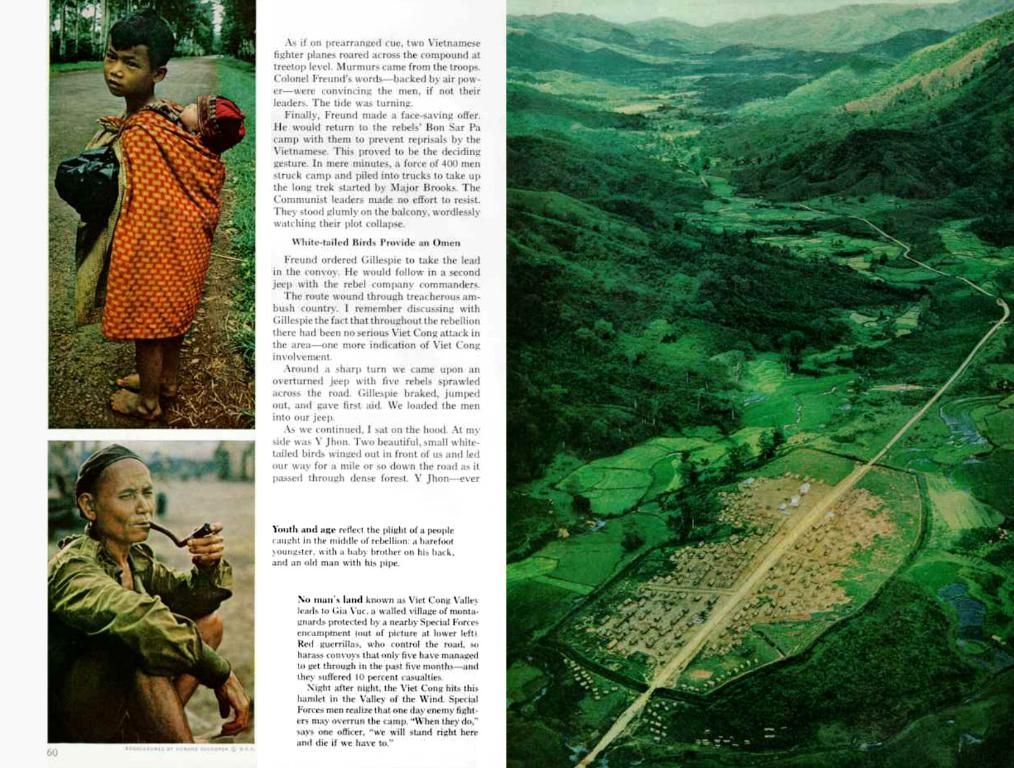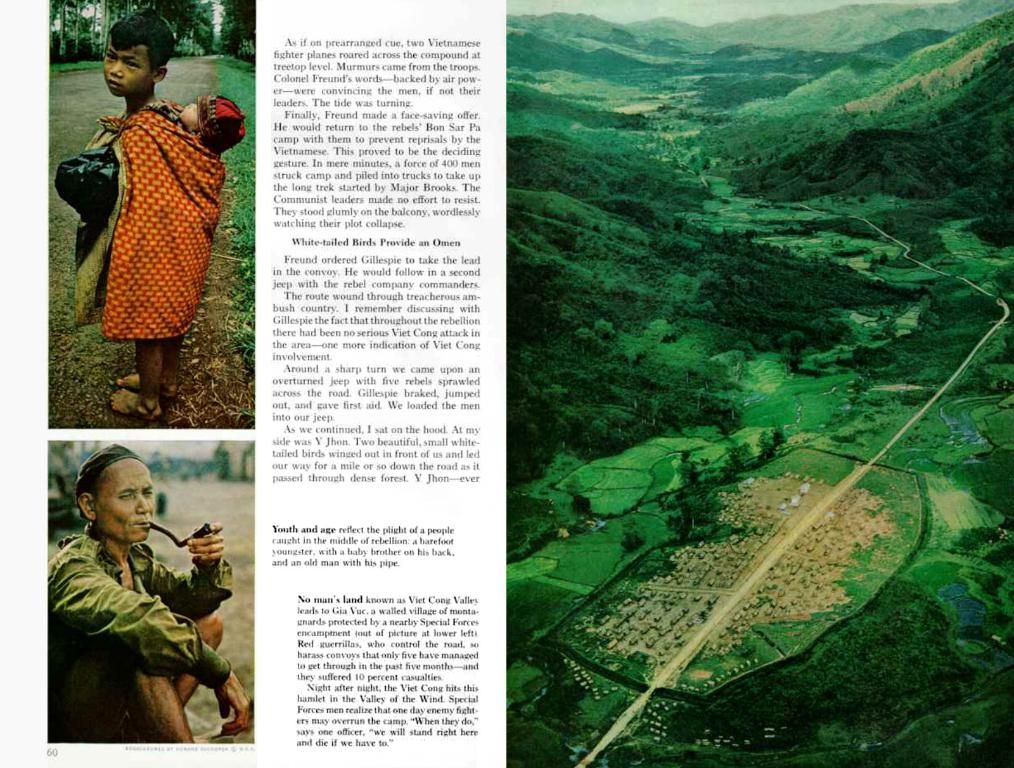Estonian Christmas: merging age-old customs with contemporary celebration
Share224* Tweet* LinkedIn* Email
Cookie and Cider Eve, Estonia's Magical Christmas
Estonia captivates with its unique spin on Christmas, delightfully fusing era-old folk traditions and modern anecdotes, secular and spiritual elements. While heavily influenced by Nordic customs, Estonia's Christmas presents a deep-rooted connection to its folklore heritage, intertwining ancient pagan traditions with Christian beliefs.
In this Nordic wonderland, it's all about Christmas Eve, yet the countdown to the festive season kicks off with the first Sunday of Advent, stirring excitement across households and communities. Advent calendars and candles can be seen everywhere, counting down the sizzling days to the big holiday.
Estonian Tales Unravel
Originally known as jõulud, Estonia's Christmas carries a pre-Christian lineage derived from the Scandinavian word jul. This ancient name is a testament to Estonia's rich Nordic roots and predates the introduction of Christianity in the region. To the Estonians, jõulud holds a double significance: it celebrates Christ's birth as well as the midwinter holiday period, which historically marked the solstice.
Before Christianity dominated the scene, Estonians celebrated the winter solstice as the sun's "birthday." This belief, reflecting the deep connection between ancient pagan practices and the year's natural cycles, lives on, symbolizing the shortest day of the year and the subsequent lengthening of days, a return of light to combat winter's frosty embrace.
As an agriculturally active society, Estonians also celebrated autumn festivities like the harvest bees, All Souls' Day, St. Martin's Day, and St. Catherine's Day, all of which culminated in Christmas, marking the seasonal transition from the harvest to the winter months.
Though the Christian connection to Christmas has gained prominence only in recent centuries, the peasantry had long observed the holiday in a manner of their own, fashioned to suit their practical needs and spiritual beliefs. For instance, St. Thomas's Day signaled the start of the winter solstice period, a time for preparing for the lengthy festive season.
During these dark times, families brewed ale, butchered pigs, and completed household chores while observing bans on noisy activities such as spinning and grinding, as these were thought to disturb the spirits.
Cyrstal-Clear Nights and Family Gatherings
Christmas Eve and Night were the most sacred times of the season, held sacred with rituals and mysticism. Families left food on the table overnight to welcome ancestral visits, keeping the hearth fires burning as an act of ancient sun worship and a symbol of the growing light. Many sought to predict the coming year's weather and harvests by interpreting natural phenomena, such as gazing at the stars, inspecting frost patterns, and peering into crystal balls.
The sauna played a vital role in Estonian Christmas festivities, where families cleansed themselves, their homes, and their spirits in preparation for the evening church service.
Deck the Halls with Tradition
Santa Claus has become a beloved guest in Estonian Christmas celebrations, leaving gifts on Christmas Eve. Another tradition, the bringing of straw into the home, may have originated from the biblical story of Jesus's birth but likely predates Christianity, symbolizing fertility, abundance, and a playful space for children during the festive season.
Since the mid-19th century, when the Christmas tree made its appearance from Germanic culture, Estonian homes have been decorated with homemade toys, sweets, candles, and dazzling Christmas crowns, fashioned to resemble elaborate chandeliers.
A Winter Buffet with Estonian Flair
Estonian Christmas meals emphasize abundance and communal feasting, with pork, sauerkraut, and blood sausages as staples, accompanied by traditional beverages such as home-brewed ale, mead, and mulled wine. While the number of dishes served on Christmas Eve can vary from seven to twelve, Christmas bread, the indulgent Christmas barrow, is a must-have for the occasion, with some even sharing it with their beloved pets. Coastal communities often feature fish in their Christmas feasts, reflecting local ingredients.
The Soviet Era and a New Dawn
The Soviet authorities banned Christmas during their occupation, instead focusing on widespread New Year's Eve celebrations. However, many Estonians found ways to privately observe Christmas, attending church services and lighting candles on the graves of departed loved ones. These quiet acts of defiance, symbolizing resistance against Soviet atheism and ideology, highlighted the enduring significance of Christmas in Estonian culture.
With Estonia's independence in the 1990s, Christmas regained its status as a public holiday, seeing a resurgence of traditions such as Christmas trees, Santa Claus visits, and festive gatherings. The declaration of Christmas Peace, announced annually since the 17th century, remains a powerful testament to the holiday's permanence in Estonian life and culture.
- The Estonian World embraces a blend of life and culture, with its unique spin on Christmas, showcasing the seamless fusion of era-old tales and modern narratives, spiritual and secular elements.
- Estonians celebrate Jõulud, a festivity with roots in Nordic customs, trademarked by its deep connection to Estonian folklore heritage, intertwining ancient pagan traditions with Christian beliefs.
- The Estonian calendar marks the first Sunday of Advent as the start of the countdown to Christmas, igniting excitement throughout households and communities with Advent calendars and candles.
- The declining days of winter solstice, once celebrated as the sun's "birthday," hold a double significance for Estonians, symbolizing not only the shortest day of the year but also the return of light as days begin to lengthen.
- Atheism could not quell the Estonians' tradition-bound spirit, as many discreetly observed Christmas during the Soviet era, attending church services and lighting candles on their loved ones' graves.
- Post-Soviet independence has seen the integral role of Christmas re-emerge within Estonian life and culture, accompanied by the purification rituals of sauna sessions and the resurgence of Christmas tree decorations and Santa Claus visits.
- The lifestyle and home-and-garden customs of Estonians come alive during the festive season, with their Christmas feasts featuring abundant dishes like pork, sauerkraut, andblood sausages, and homes adorned with elaborate Christmas crowns and traditional Christmas bread.


![A thrilling new collaboration has been unveiled between our esteemed Music School [...]](/en/img/20250615095836_pexels-search-image-description.jpeg)



